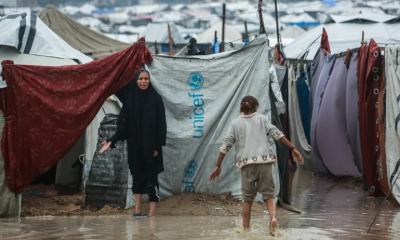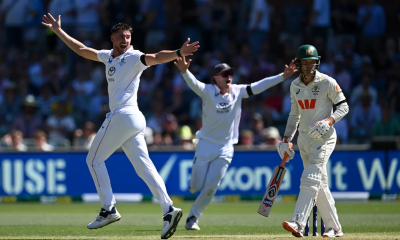Features
On your marks, get set – for the weakest parliament to face the gravest crises
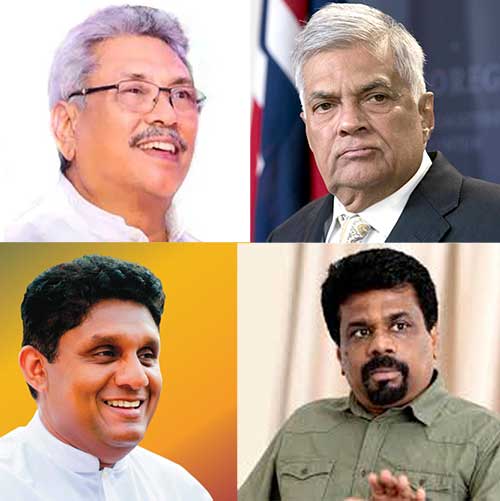
by Rajan Philips
The country has been on its marks for nearly five months for Wednesdays election. There have been false starts given the long wait. Now it is time to get set, in track and field terminology. Get set for what? When the gun go off, the race be over, the disgraced Canadian sprinter Ben Johnson had predicted before his scandalously record shattering 100 meter dash at the 1988 Seoul Olympics. The race seems to be over in this weeks election even before the people have fired their voting guns.
Victory is seemingly assured for the SLPP. The question is whether the Rajapaksa Party will set a new ground record with a two-thirds majority in a proportional representation election. There are other mini bets going on among political bookies. Who will come second: Ranils almost-dead UNP, or Sajiths struggling-to-be born SJB? How well or badly will the JVP do? Will there be a new challenger to the TNA in the shrinking Tamil universe? How divided will be the Muslim vote? And will the Thondaman scion be able to deliver upcountry Tamil votes to the SLPP the way his forefathers delivered them to the UNP?
Whichever way these questions get answered as the votes get counted the day after the election, there is not going to be much of a difference in the new parliament. For, as I wrote last week, a majority of the 188 sitting MPs who are running again are likely to get re-elected in spite of the deep revulsions that most people have against almost all of them. The really bad apples are equally distributed between the SLPP/SLFP and the UNP/SJB.
The only way to prevent at least the worst among them from returning to parliament, is to elect new MPs from outside the four (SLPP/SLFP and UNP/SJB) Parties. And this can only happen in the South where it matters, if at least a dozen or more new JVP/NPP MPs get elected on Wednesday. Whether the country can muster sufficient electoral wisdom to accomplish this, we will know on Thursday.
The JVPs Vijitha Herath has told Chandani Kirinde of the Daily Financial Times (Friday, August 31) that his Party would not allow the repeal of the 19th Amendment to the Constitution and would join forces with any Party in the next Parliament to block any such moves. This is courageous and encouraging, something to which Ranil Wickremesinghe and Sajith Premadasa have not committed themselves so far. Resistance is not part of their political DNA.
Already, there are worries among civil society activists who worked hard for the enactment of 19A that even if the government does not get a two-thirds majority in the election, it will find a way to buy out enough MPs from the UNP and the SJB to get it after the election. That will be their path of least resistance if there is no JVP in parliament strong enough to mobilize resistance to repealing 19A. A good dozen of them (JVP) can make a world of difference in parliament. They can save what is being set up to be the weakest parliament in Sri Lankan history from becoming its worst as well.
During the last five years, it was often said and heard that Ranil Wickremesinghe plays the long game in politics. That is, he keeps a distant focus, is not ruffled by all the setbacks around him, and keeps moving slowly in the right direction. Mahinda Rajapaksa and Ranil Wickremesinghe started early in politics and have lived with it for 50 and 43 years, respectively. Mahinda Rajapaksa has seen and achieved everything a Sri Lankan politician can possibly accomplish. Ranil Wickremesinghe too, except the coveted presidency.
We can only say that Mr. Wickremesinghe has played too long a game in politics, over too long a period, and it is now time for him to settle down over a card game of Patience or Solitaire. They are not long games, but they can be played endlessly to turn them into a long game to no end. If it is game over for Ranil Wickremesinghe, what is in the game for Mahinda Rajapaksa? President Gotabaya Rajapaksa is at a different point in his political game. He started late in politics, but he became President without wasting any time in parliament, unlike his older brother. What will he do with his presidency? That is the question.
1960 parallels
Although the circumstances are drastically different, there are similarities between the aftermaths of the July 1960 election and August 2020 election. The hallmarks of the 1960-64 SLFP government were overall incompetence, economic mismanagement, and the total repudiation of the efforts of SWRD Bandaranaike to settle the Tamil question. Between July 1960 and June 1964, there were four finance ministers, and the fifth one Dr. NM Perera lasted six months from June to December 1964, when the first coalition government fell. There was Satyagraha in Jaffna, a failed military coup, and the prolonged detention of all MPs of the Federal Party. The economy began its downward slide, with unemployment and the balance of payments becoming the chronic scourges.
The SLFP government lost the elections in 1965, and when it returned to power in 1970, it was the two Left Parties (the LSSP and the CP) that were left to do all the heavy lifting: on the economy, the constitution and the plantations, and transport and housing. Philip Gunawardena and William Silva had played a similar role in the first SLFP/MEP government under SWRD Bandaranaike. The objective outcomes of coalition politics were undoubtedly the weakening of the left movement and the disenchantment of the youth, but the main SLFP purpose in coalition politics was not to forestall a social revolution but to compensate for SLFP incompetence by aligning with the left. Even the electoral no-contest pacts were a secondary purpose. How are these relevant today?
The SLPP incompetence and its cabinet material today are far worse than those of the SLFP in 1960-64. Even if you compare head to head the four Finance Ministers, whom Mrs. Bandaranaike tried before turning to NM for rescue, with the SLPP ministers today (the election will not make a difference), you would see that each one of the old SLFPers being heads and shoulders above their SLPP counterparts today. Felix Dias, though he was too clever for his own good, would wipe the floor of parliament with any SLPPer of today. CP de Silva, Senior Civil Servant and later Minister, was in a lofty league of his own, that nobody now can even touch. PBG Kalugalla and TB Ilangaratne were not intimidating intellectuals, but they had direct political constituencies and loads of political experience. They were party stalwarts and not family placeholders.
There is no Left, like there was in the 1960s, to which the President can turn for assistance in competence. Instead, he is turning to the military for competence. It was different in 1962, when the government had to put down a military coup to take over the country because the government was incompetent in the minds of the military. Now there is creeping takeover of the country not by any military coup but by military task forces.
Most importantly, the challenges that the country is facing today are far more severe and intractable than those in 1960, or any time in Sri Lankas modern history. The mismatch between government competence and the severity of challenges has never been so unmanageable. Can the executive presidency, which nobody even imagined in 1960, make a difference? Apparently not. The President wants a two-thirds majority in parliament before he can make any difference. He wants more power in parliament to increase his own powers and reduce the cabinet of ministers and the parliament itself to being rubber stamps of the executive.
Features
How the ‘Lost Tribes of Israel’ help in understanding Mid-East peace issues

 Reports that the Israeli authorities have given the ‘go ahead’ for the repatriation and integration into the Israeli populace of some survivors in parts of India from what are described as the ‘Lost Tribes of Israel’, bring up a subject that merits continuous and focused research. The contemporary observer of international politics seeking to understand more thoroughly the factors fueling the Middle East conflict and the crucial role identity issues play in it would, no doubt, be the biggest beneficiary of such research.
Reports that the Israeli authorities have given the ‘go ahead’ for the repatriation and integration into the Israeli populace of some survivors in parts of India from what are described as the ‘Lost Tribes of Israel’, bring up a subject that merits continuous and focused research. The contemporary observer of international politics seeking to understand more thoroughly the factors fueling the Middle East conflict and the crucial role identity issues play in it would, no doubt, be the biggest beneficiary of such research.
In the global South in general there has hitherto been a tendency to soft peddle what may be called ‘the Israeli side of the story’. While the situation of the Palestinians has generated wide-spread empathy for them and very rightly so, an understanding of the causes prompting the Israelis to think and act as they do has gone comparatively unaddressed. This is a glaring lacuna in Southern scholarship in particular on the Middle East question. But if the international community is to pave the way for even a measure of reconciliation in the region the points of view of both sides to the conflict need to be more thoroughly understood.
A news report on page 3 of this newspaper on December 12, 2025 titled, ‘ Israel is moving Lost Tribe Jews from India’, is compulsory reading for those seeking to understand the history of Israel in its essentials. Going by Biblical History in particular the stark truth is that the Israelis were as persecuted as the Palestinians. It could be said that this process began in ancient times even before the birth of Jesus Christ a little over 2000 years ago.
The Old Testament of the Bible is essential reading for an understanding of the history of the Israelis, who are also referred to as ‘The Chosen People of God’. It is a history replete with persecution, mind-numbing war and suffering. The Israelis were continually harassed, subjected to extreme suffering and were displaced from the land they were settled in; which roughly corresponds to today’s Palestinian territories.
The Books of the Old Testament tell us that right through ancient times the Jews, today’s Israelis, suffered displacement, particularly at the hands of the then regional powers, Egypt, Persia and Assyria, and were taken captive to the lands of the conquerors or were reduced to slavery in their own territories. Consequently, displaced Jews escaped to the most distant parts of the world. This is how they happened to be in India as well. However, the fact to note is that the Jews were at one time a settled community with territories of their own.
What is exemplary about the Israeli or Zionist state that was established in 1948, under the overlordship of the old imperial powers, such as Britain, is that it invited the Jews spread virtually all over the world to return to their homeland, the Zionist state. Accordingly, as the report of December 12 reveals, the remnants of the Jewish tribes in India, for example, numbering some 5,800 persons, are being taken back to Israel from India’s Mizoram and Manipur states. Also of note is the fact that the Jews were originally members of 12 tribes, which figure thought-provokingly corresponds to Jesus’ 12 apostles.
According to the news report, these repatriation moves by the Israeli state are not bereft of some strategic motives, such as the strengthening of the Israeli presence in areas bordering Lebanon, for example, which are seen as vulnerable to Hizbollah attacks. The repatriation moves are also interpreted as part of efforts to ‘Judaize’ the Galilean region in particular with a view to reducing the Arab-Islamic presence there, since these areas are also home to a considerable number of Arabs. Since the possibility of friction between the Israeli settlers from India and the Arabs cannot be ruled out, we could very well be seeing the prelude to stepped-up ethnic cleansing exercises by the Israeli state in these security-sensitive border areas.
The larger problem for the international community, given this backdrop, is ‘ where we could go from here’ with regard to making forward moves towards realizing even a measure of peace and reconciliation in the Middle East. The Israeli state is doing well to open its doors to the returning Jewish diaspora readily but given the current power configurations in Israel, transitioning to Middle East peace could remain a distant prospect.
To ascertain why peace remains elusive in the region one would need to factor in that the Netanyahu regime in Israel is of a Far Right orientation. Such regimes usually keep countries internally divided and virtually at war with themselves by exploiting to their advantage, among other things, identity issues. The settlement of persons hailing from ‘Lost Israeli Tribes’ in security-sensitive regions offers the Netanyahu regime the latest opportunity to pit one community against the other in these regions and thereby consolidate its influence and power over the Jewish majority in Israel.
Ethnic-cleansing exercises orchestrated by the Israeli centre take this process to a ‘new high’ and are based on the same destructive reasoning. Basically, the underlying logic is that the Jewish nation is under constant attack by its rivals and should be on a constant war footing with the latter.
Unfortunately the US is at present not doing anything constructive or concrete to further the cause of a fair Middle East peace. Its peace effort in the region has, to all intents and purpose, run aground; presuming that the US was, indeed, intent on pursuing a Middle East settlement. Nor is the US bringing pressure to bear on Israel to make some headway towards some sort of solution. In the absence of these essential factors the Middle East is bound to remain in a state of war.
While it ought to be granted that the Jews have a long history of persecution and victimization, the Israeli state is not doing its citizens any good by keeping these harrowing memories alive for the purpose of power-aggrandizement and by following a policy of pitting one community against the other. While the Jewish legacy of victimhood needs to be abandoned, the Jewish people would be doing themselves immense good by guarding against voting into office Right wing governments that thrive on the ruthless exploitation identity issues.
Features
Presidential authority in times of emergency:A contemporary appraisal
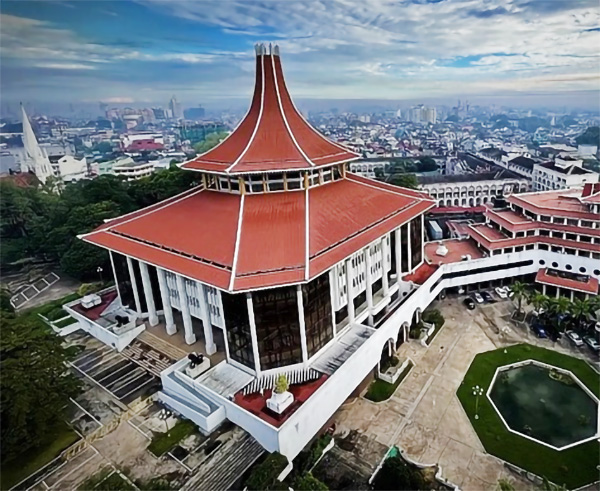
Keynote Address Delivered at the International Research Conference of the Faculty of Law, University of Colombo, on 12 December 2025.
1. The Policy Dilemma
One of the great challenges of modern public law is to reconcile traditional principles relating to the rule of law and the separation of powers with the exigencies of crises which threaten the destruction of society itself. To what extent must protective mechanisms developed by systems of law over the ages give way to the need for physical survival in the throes of life-threatening crises? What is the right balance to be struck, as a matter of public policy?
The classic statement is by John Locke, who insisted that, in emergencies, the government should have legally unfettered power “to act according to discretion, for the public good, without the prescription of the law, and sometimes even against it” (Second Treatise of Government). This is an ancient idea which goes back to Roman times, when Cicero, in his famous oration, Pro Milone, declared: “Inter arma silent leges” (“Amid the clash of arms, the laws are silent”).
This received expression in the present century in the work of Carl Schmitt, who insisted that “The sovereign is he who decides on the state of exception” (Political Theology:Four Chapters on the Concept of Sovereignty). According to him, not only is the sovereign’s authority untrammelled during emergency, but the declaration of emergency is his right alone, dependent solely on the exercise of his subjective judgment. This unqualified power springs from the supreme law of nature—-the safety of the people.
Judicial pronouncements across the world explicitly reflect this point of view. Justice Story, on behalf of the Supreme Court of the United States, famously declared: “The question arises, by whom is the exigency to be judged and decided? We are all of opinion that the authority to decide whether the exigency has arisen, belongs exclusively to the President, and that his decision is conclusive upon all other persons” (Martin v. Mott).In Ghulam Sarwar v. Union of India, Subba Rao CJ, speaking for the Supreme Court of India, observed: “The question whether there is grave emergency is left to the satisfaction of the Executive, for it is obviously in the best position to judge the situation”.
There is, however, equally emphatic opinion to the contrary. Khanna J, in a celebrated dissent, was scathing in his denunciation of the opposite approach: “The position would be that, so far as executive officers are concerned, in matters relating to life and personal liberty of citizens, they would not be governed by any law, they would not be answerable to any court, and they would be wielding more or less despotic powers” (Additional District Magistrate, Jabalpur v. Shivakant Shukla).
These competing postulates have been articulated with equal passion.
II. A Landmark Pronouncement by the Supreme Court of Sri Lanka
The Supreme Court of Sri Lanka had recently to deal with this issue frontally (Ambika Satkunanathan v. Attorney General). This is a watershed decision because, for the first time in our legal history, the Supreme Court held that an Acting President of the Republic had violated the fundamental rights of the People, enshrined in the Constitution, by the declaration of a State of Emergency.
The circumstances against the backdrop of which this historic ruling was made, are well known. A serious depletion of foreign reserves resulted in a severe shortage of basic amenities like fuel, cooking gas, electricity, staple food items, and medicine. In the context of an unprecedented default in the repayment of foreign loans and significant depreciation of the rupee, extended power cuts and galloping inflation led to acute economic hardship. These circumstances culminated in unrest on a scale never seen before on the Island.
Violence included the brutal murder of a Member of Parliament, the torching of residences of the Prime Minister and more than 70 other political personalities, forcible occupation of the Presidential Secretariat, the President’s official residence and the Office of the Prime Minister, with almost a million people gathered in Colombo demanding the resignation of the President. The elected President had fled the country, and a date had been set for an urgent meeting of Parliament to elect the President in accordance with procedure spelt out in the Constitution. An unruly mob had encircled Parliament, threatening to prevent this meeting from taking place. This was the situation in which Acting President Ranil Wickemesinghe declared a State of Emergency.
He did so in terms of provision in the Public Security Ordinance, which empowered him to take this action, if he was of opinion that this was “expedient in the interests of public security and the preservation of public order, or for the maintenance of supplies and services essential to the life of the community”(section 2).
The decision was that of a divided Supreme Court. The majority consisted of Murdu Fernando CJ and Yasantha Kodagoda J, while there was a vigorous dissent by Arjuna Obeyesekere J. The minority held that the circumstances warranted the opinion entertained by the Acting President, while the plurality declared themselves prepared to make this assumption. This, then, was common ground. The difference of opinion pertained to another vital issue.
Once the Acting President (hereinafter referred to as the President), had reached this conclusion, he had four optional courses of action available to him:
(i) He could have recourse to the routine law, principally the provisions of the Penal Code and the Criminal Procedure Code, to deal with the situation;
(ii) He could invoke Part III of the Public Security Ordinance, which would enable him to take particular actions such as calling out the Armed Forces to supplement the Police, prevent public gatherings on highways and in the vicinity of bridges and other specified locations, and declare curfew. These measures could be taken, short of proclamation of a State of Emergency;
(iii) He could take the “drastic step”, under Part II of the Public Security Ordinance, to bring into force the provisions contained within that section, in terms of which an Emergency could be declared, applicable to the whole Island;
(iv) While declaring an Emergency under Part II, he could confine its operation to particular parts of the Island.
This is where the difference of opinion between the plurality and the minority of the court manifested itself. The majority was of opinion that the President’s satisfaction relating to the existence of objective conditions justifying declaration of Emergency did not automatically entitle him to go the full length of bringing into being a nationwide Emergency under Part II, but obligated him further to consider whether measures of a more limited nature, contemplated by Part III, would be sufficient to deal effectively with the situation.Failure to do so, according to their ruling, would involve a breach of the Constitution.
By contrast, the minority was convinced that “Once the President has come to the conclusion that a state of public emergency exists, there is no purpose in mandating a consideration of other options”, and that “Requiring the President to embark on whether the ordinary laws or other various provisions or options would be adequate to deal with a public or national emergency, would be unreasonable and an unprecedented step”. On this basis, the minority held that the President’s actions were entirely within the Constitution, and entailed no liability for contravention of fundamental rights.
A great deal hinged, in practical terms,
on the divergence between these points of view.
III. Categories of Emergency: Uniform or Disparate Rules?
Contemporary trends in the law acknowledge marked differences in scale, intensity, and duration among types of emergency which precipitate varying degrees of government paralysis.
South African law incorporates one comprehensive definition of a State of Emergency, capable of invocation when “the life of the nation is threatened by war, invasion, general insurrection, disorder, natural disaster, or other public emergency” (Constitution, Article 37(1)(a)). Preferable, by far, is the position under the Emergencies Act of Canada, which recognises four different kinds of emergencies— natural disasters, threats to public order, international emergencies, and states of war (Section 18(2)). This enables different degrees of Parliamentary scrutiny and control.
The Constitution of India provides another example of this approach. Article 352 envisages a threat to the security of India or any part of the country by reason of war, external aggression or armed rebellion, while Article 356 contemplates a failure of constitutional government in any Indian state, and the context of Article 360 is jeopardy to the financial stability or credit of India.
In the spectrum of gravity, peril to the very existence of the state, in the degree present in the Sri Lankan situation, attracts the highest concern. In circumstances of potential government breakdown, “facile distrust” is not the recommended counsel. The courts of India have cautioned that “When there is a crisis situation, it is necessary to trust the government with extraordinary powers in order to enable it to overcome such crisis” (Bhagvati J. in Shivakant Shukla).
Undue concern about a lawless situation, typified by unbridled executive power, is not realistic. Emergency legislation has rightly been characterized as “extra-legislative legislation”. Far from there being a legal vacuum, systems of law have furnished practical safeguards, while enabling public order to be maintained.
One of these is the imaginative “super-majority escalator” technique, characteristic of South African law. Only a simple majority of Parliament is required to approve a State of Emergency operative for a maximum period of 21 days, and to extend it up to 3 months. Beyond that, a 60% majority is compulsory for further extensions (Article 37). Here, then, is a successful reconciliation of competing objectives.
Article 16 of the Constitution of the Fifth Republic in France empowers the President to determine not only the sufficiency of conditions warranting the declaration of a State of Emergency, but also its appropriate duration. Restraints on Presidential power in France are weak because the President, although required to consult the Conseil Constitutionel (Constitutional Court), is not bound by its advisory opinion, in the event of contrary advice.
Relative amplitude of Presidential power in emergency situations in France has been justified by a prominent French jurist, François Saint-Bonnet, on the basis that the curtailment of emergency powers at the disposal of the Executive carries the risk of deprivation of the very tools which the government finds indispensable to combat the threat.
Germany’s Basic Law, although wary of emergency powers because of the harrowing experience of Article 48(2) of the Constitution of the Weimar Republic, which paved the way for the rise of Hitler, nevertheless does not balk at recognizing “internal emergencies” which enable intervention by the Executive, albeit subject to control by the Federal Parliament.
Constitutional provisions in different jurisdictions, irrespective of the approach selected, envisage substantial executive power in times of emergency, curtailed by surveillance on the part of the elected Legislature.
IV. Restraints on Judicial Intervention
The decided cases in many countries are replete with examples of indicia which concede to the Executive great latitude in these contexts. The recurring feature is the urging of restraint in the exercise of judicial review in keeping with a suitably benign construction, consistent with constitutional standards. This is reflected in unimpeachable academic authority, as well.
It has been insisted that executive decisions “should be taken seriously as a bona fide attempt to solve whatever social problem they set out to tackle”(Aileen Kavanagh).The caution has been administered that judges should exercise great caution before concluding that the government has violated constitutional rights(Prof. T. R. S. Allan) and,in public emergencies threatening the life of the nation, elected officials should be permitted “to err, if at all, on the side of safety”(Lord Bingham).The courts “should resist the temptation to substitute their own preferred solutions to questions of public policy”(Allan).
This is so, for a number of reasons. One of them is that the public authority is entitled to latitude because it has “a kind of responsibility to advance the public interest that a court does not have”(Brooke L.J.).This is reinforced by other considerations. For instance, possession of special expertise by the executive authority is an important factor.
The nature of the subject matter, for this very reason, has a vital bearing on the issue. Judges have been conscious that “the more political the question is, the more appropriate it will be for political resolution, and the less likely it is to be an appropriate matter for judicial decision”(Lord Bingham).
A responsible and representative system of democratic governance brings into sharp focus “the degree of democratic accountability of the original decision maker, and the extent to which other mechanisms of accountability may be available”(Murray Hunt).Basic values of constitutionalism identify Parliamentary controls as infinitely preferable, in this regard, to judicial intervention.
This has to do with the nature and legitimate confines of the judicial function. Mirza Beg J, speaking for the Supreme Court of India, has candidly conceded that “the judicial process suffers from inherent limitations”(Shivakant Shukla).This is essentially because a court “can neither have full and truthful information, nor the means to such information”(Chandrachud J in Shivakant Shukla),especially in respect of classified information.
An absolute imperative is that the distinction between judicial review and substitution of judgment must be scrupulously observed. Admittedly contextual, this principle is of overriding significance because it is “wrong to expect executive bodies to replicate the style of analysis adopted by courts in determining allegations of violation of rights”(T. R. S. Allan).
It is crucial for the rule of law that the dividing line between these two distinct functions should not become inadvertently blurred. It is not necessary for the public authority to address itself to the same legal arguments as the court(Court of Appeal of England in the Begum case),the judicial function being restricted by the consideration that “the court is usually concerned with whether the decision maker reached his decision in the right way, rather than whether he got what the court might think to be the right answer”(Lord Hoffmann).
The raison d’etre underpinning executive intervention in these extraordinary situations should be constantly borne in mind. The reality is the absence of a practical substitute. “Neither the legislature nor the judiciary is capable of swift, energetic action, which leaves the executive by default as the authoritative body”(David Dyzenhaus).For this inescapable reason, there has been constant emphasis that executive actors “should not be deterred from engaging in the very activity needed,and contemplated, to deal with the crisis”.
The overarching object of policy is the preservation of public confidence. “The faster and more effective the response, the smaller the overall damage to society, as a whole. The best way for government to respond to these fears is to do something large and dramatic to reassure the populace”(Bruce Ackerman).
The weight attaching to these elements of public policy is self-evident. (To be continued)
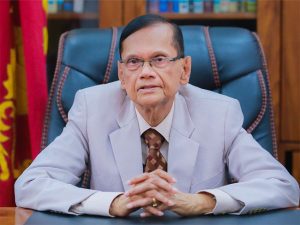 By Professor G. L. Peiris
By Professor G. L. Peiris
D. Phil. (Oxford), Ph. D. (Sri Lanka); Rhodes Scholar,Quondam Visiting Fellow of the Universities of Oxford, Cambridge and London; Former Vice-Chancellor and Emeritus Professor of Law of the University of Colombo.
Features
90th Anniversary of LSSP and leftism in Sri Lanka

The Lanka Sama Samaja Party was formed on the 18th of December 1935. Its four leaders were Dr. N. M, Perera, Dr. Coivin R, de Silva, Philip Gunewardena and Leslie Goonewardene, who also became the General Secretary. (Prior to this, in 1933, the Wellawatte Mills strike first led to their getting together in action). It must be mentioned that The LSSP was the first properly constituted political party in the country. It was also the first genuine Left party and its political philosophy was based on Marxism-Leninism. It took the name ” Sama Samaja”, which means ” Equal Society”, as, at that time, the people in Sri Lanka were unfamiliar with the terms Socialism and Communism. It was quickly accepted by the people and, despite the use of state power and thuggery against the LSSP by the local capitalist class, backed by the British rulers, the Party rapidly gained popularity among the people. In the General Election of March 1936 Dr. N. M. Perera was elected to represent the Ruwanwella electorate and Philip Gunawardena the Avissawella electorate. Unfortunately, Dr. S. A. Wickramasinghe was unable to retain Akuressa, which he had won in the 1931 Election, and Leslie Goonewardene failed to win Panadura due to the use of caste and money unfairly against him. Leslie, throughout his political career, refrained from descending to such a low level of politics But the LSSP stand helped in the process of uniting and politicisation of the people which was necessary to generate the confidence of the people in their ability to win Complete Independence through the democratic process.
Throughout its history a major role in the success of the LSSP was its provision of support to the struggles of the working class to win its rights. Dr. N. M. Perera formed the Ceylon Federation of Labour and, as its President, he organised the trade union movement to focus on winning their genuine demands as a class. He negotiated with the employers and won many demands across the table, and resorted to strike action as a last resort. He won the respect of both employees and employers as a leader who did not misuse the trade unions for personal vendettas. He used Parliament in a responsible manner to fight on behalf of the workers, while informing the public who suffered as a result of the strikes that the demands were just, and winning their support as well. The LSSP unions have maintained these values and continue to serve the working class
The LSSP was aware of the problem of poverty leading to hunger as a major factor that affected the life of a majority of our people. A survey done at the MRI, about two years ago, showed that 63% of families had an income below the poverty line. They could not have three adequate meals per day. Some had two meals and others only one that met their nutritional needs. The children and mothers were particularly vulnerable. The malnutrition level in that study was 14.3%. But the situation appears to be worse now. The Suriyamal Movement led NM to one of the worst affected areas, Kegalle. The focus was on malaria eradication, but they had to also address the problem of poverty and hunger. Rice, dhal and coconut sambol were provided. NM came to be known as “Parippu Mahaththaya” as a result. The LSSP is reviving the Suriyamal Movement which has become an urgent need after the Climate Change. Any help will be welcome.
We celebrate Independence Day alone, but India also celebrates Republic Day. It is the latter that gave India sovereignty, without which independence is empty. They won it within three years, with Ambedkar drafting the Republican Constitution. The LSSP kept on pressing for it but the comprador capitalist class, led by the UNP, kept delaying as they were happy with Dominion status. The LSSP joined the SLFP and CP to form the coalition government, led by Sirimavo Bandaranaike, in 1970, and Dr. Colvin R. de Silva was made the Minister of Constitutional Affairs. He finally drafted the Republican Constitution in 1972. Sri Lanka took 24 years to do this and we can hold our heads up as we are now politically a truly independent sovereign nation. But we remain a poor underdeveloped country with widespread unemployment and underemployment, especially among the youth. The number of those in poverty is rising while the rich are becoming super rich. The rich/poor gap is widening and it may explode. It is sad to see that Sri Lanka is far away from the Welfare State that the LSSP, led by Dr. Perera, strove to build. As Minister of Finance, he kept the cost of living down, balanced the Budget and did not tax the poor. He had a high direct tax on those who could afford to pay this. Unlike now, the priority was given to use the limited forex to buy essential medicines,not luxury vehicles.
As Minister of Science and Technology, I started the Vidatha Movement to provide the technology and finance for Small and Medium Enterprises (SMEs) countrywide, one centre headed by a science graduate in each division. I am told that more than 50,000 entrepreneurs have emerged marketing their products sustainably. More than one thousand are exporting their products. I appeal to the NPP government to continue to support them. We must develop into an industrial nation if we are to emerge from poverty. I and the LSSP will give all support. By the way, our armed forces can defend our country. We do not need American forces.
by Prof. TISSA VITARANA
(Leader and General Secretary, LSSP)
-

 Business7 days ago
Business7 days agoCabinet approves establishment of two 50 MW wind power stations in Mullikulum, Mannar region
-

 Features4 days ago
Features4 days agoWhy Sri Lanka Still Has No Doppler Radar – and Who Should Be Held Accountable
-

 Features6 days ago
Features6 days agoDitwah: A Country Tested, A People United
-

 News6 days ago
News6 days agoRs 1. 3 bn yahapalana building deal under investigation
-
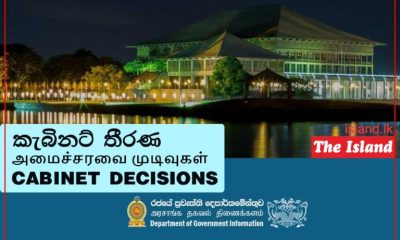
 News7 days ago
News7 days agoCabinet approves the transfer of the constructions and land reserved for the Kiinniya University to the Ministry of Foreign Affairs, Foreign Employment, and Tourism
-

 Opinion6 days ago
Opinion6 days agoComfort for some, death for others: The reality of climate change
-

 Business6 days ago
Business6 days agoFluctuating fortunes for bourse in the wake of selling pressure
-
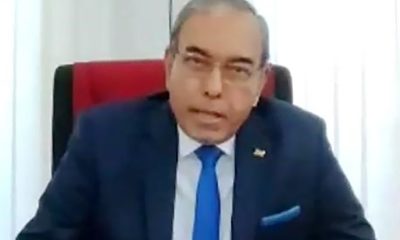
 News6 days ago
News6 days agoFormer SAARC SG Esala Weerakoon calls for ‘South Asian Climate Compact’




